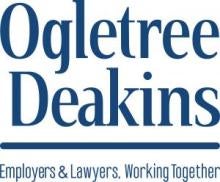On July 16, 2025, the House Committee on Education and Workforce held a subcommittee hearing focused on evaluating the effectiveness of the Occupational Safety and Health Administration’s (OSHA) compliance assistance initiatives, the role of collaborative programs in improving workplace safety, and the future direction of such efforts. A central topic of discussion during the Subcommittee on Workforce Protections hearing, titled “Safe Workplaces, Stronger Partnerships: The Future of OSHA Compliance Assistance,” was whether OSHA’s Voluntary Protection Program (VPP), which recognizes employers and workers in private industry and federal agencies that have implemented effective safety and health management systems, should be formally codified into law. Repeatedly over the past decade, the future of VPP has been called into question as proposals have been floated to eliminate or seriously restrict eligibility for the program.
Quick Hits
- The House Committee on Education and Workforce held a hearing on July 16, 2025, to evaluate OSHA’s compliance assistance initiatives and discuss the future of the Voluntary Protection Program.
- Lawmakers and witnesses emphasized the importance of OSHA’s compliance assistance programs in helping small and medium-sized businesses meet their safety obligations under the OSH Act.
- The hearing highlighted the debate over codifying the Voluntary Protection Program into law to ensure its stability and effectiveness, with proponents arguing it would provide a permanent legal foundation and consistent funding.
Lawmakers and witnesses discussed the importance of OSHA’s compliance assistance programs in helping employers, especially small and medium-sized businesses, understand and meet their obligations under the Occupational Safety and Health Act (OSH Act). These programs include outreach, training, on-site consultations, and the dissemination of best practices. The hearing highlighted that compliance assistance is a critical complement to enforcement, enabling employers to proactively address hazards before they result in injuries or violations.
VPP was repeatedly cited as a model for successful public-private partnerships. Under VPP, OSHA recognizes worksites with exemplary safety and health management systems, which often achieve injury and illness rates below national averages. Participants in the hearing noted that VPP fosters a culture of continuous improvement, employee involvement, and management commitment to safety.
A significant portion of the hearing was devoted to the question of whether VPP should be codified, meaning established by statute rather than existing solely as an OSHA administrative program. Proponents said that codifying VPP would provide the program with a stable and permanent legal foundation. Currently, VPP exists as an administrative initiative within OSHA, which means its existence and funding are subject to changes in agency leadership, shifting policy priorities, and annual budget decisions. By establishing VPP in statute, the U.S. Congress would ensure that the program cannot be easily altered, defunded, or discontinued by future administrations. This long-term stability would give employers confidence that their investment in meeting VPP requirements will be recognized and supported for years to come.
Employers are more likely to participate in programs that offer predictable benefits and clear, consistent requirements. Codification would signal to employers that VPP is a reliable, enduring program, making it more attractive for companies to dedicate resources to achieving and maintaining VPP status. The assurance that the program would not be abruptly changed or eliminated would reduce the perceived risk for employers considering participation.
A codified VPP would likely receive more consistent funding and oversight from Congress, allowing OSHA to allocate resources more effectively to support participating employers. This could include expanded technical assistance, streamlined application processes, and more robust program evaluation. Employers may be more willing to participate if they know that adequate support and oversight are guaranteed by law.
Formalizing VPP through legislation would elevate its status, making participation a more prestigious achievement. Employers often value recognition from OSHA as a leader in workplace safety, and statutory backing would further enhance the credibility and value of VPP certification. This increased prestige could serve as a powerful incentive for employers to pursue VPP status.
Some witnesses and members of Congress expressed concerns about ensuring that codification would not dilute OSHA’s enforcement authority or allow noncompliant employers to avoid penalties. Lawmakers and witnesses also discussed the need for clear eligibility criteria, regular program evaluation, and mechanisms to remove participants that fail to maintain high safety standards.
The hearing emphasized the value of partnerships between OSHA, employers, labor organizations, and other stakeholders. Such partnerships, including VPP and OSHA’s Alliance Program, were credited with driving innovation in workplace safety and health. Lawmakers explored ways to expand these collaborative efforts while maintaining a strong enforcement presence for employers that do not meet their obligations.
Testimony underscored that compliance assistance and enforcement are not mutually exclusive. Effective compliance assistance can reduce the need for enforcement by preventing hazards, but robust enforcement remains essential for deterring willful or repeat violations and protecting workers in high-risk environments.
While the hearing demonstrated bipartisan support for the principles underlying VPP and other compliance assistance initiatives, no immediate legislative action was taken to codify VPP. However, the strong interest expressed by lawmakers and stakeholders suggests that future legislative proposals could emerge. Any move toward codification would likely include provisions to:
- preserve the integrity and rigor of VPP;
- ensure regular oversight and accountability; and
- maintain a balance between voluntary compliance and mandatory enforcement.
The “Safe Workplaces, Stronger Partnerships” hearing reaffirmed the value of OSHA’s compliance assistance programs and the Voluntary Protection Program in promoting workplace safety. While there is momentum and interest in codifying VPP to ensure its permanence and effectiveness, further legislative action would be required. The hearing set the stage for ongoing discussions about how best to support safe workplaces through a combination of strong partnerships, effective compliance assistance, and robust enforcement.



 />i
/>i
